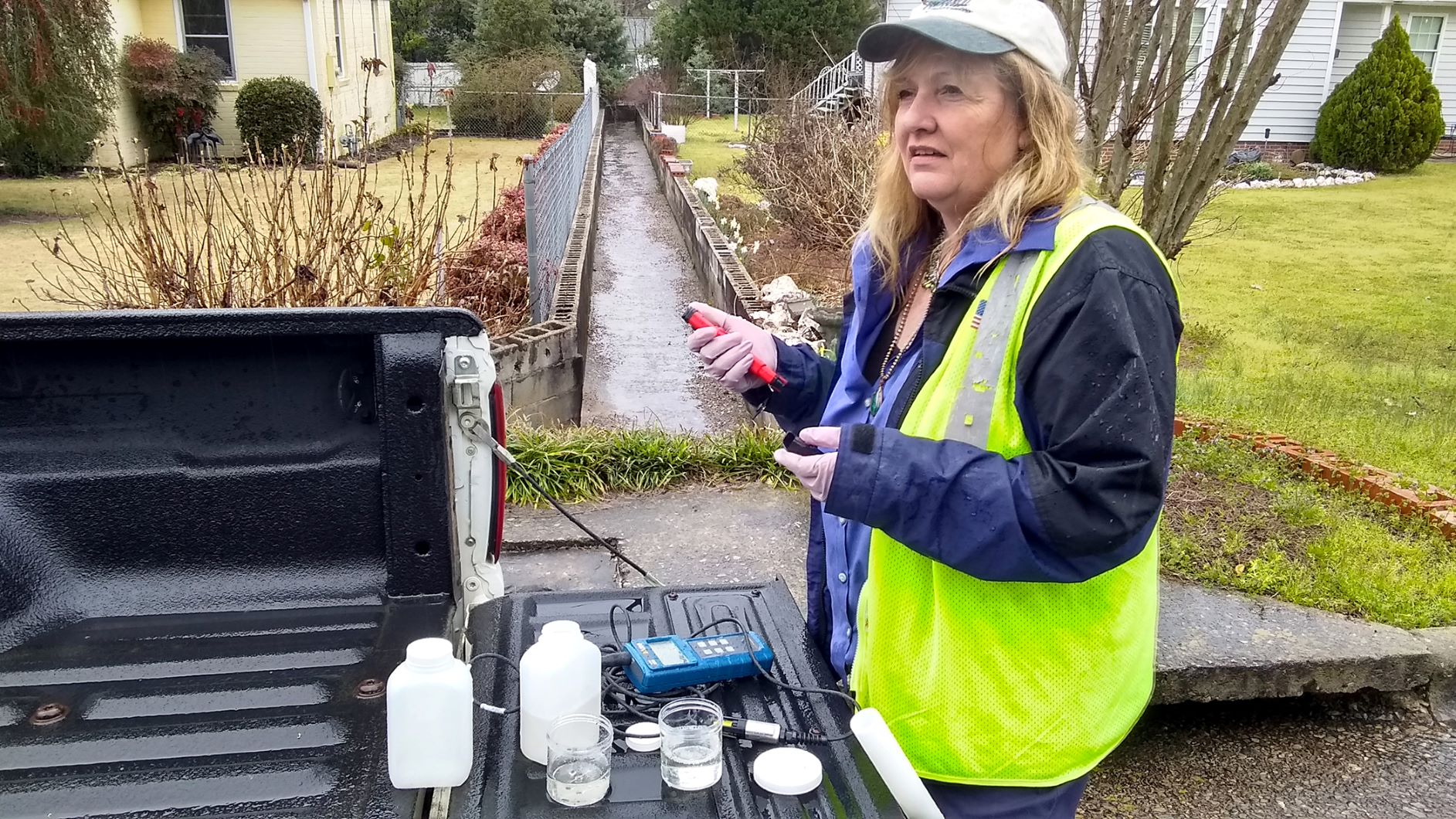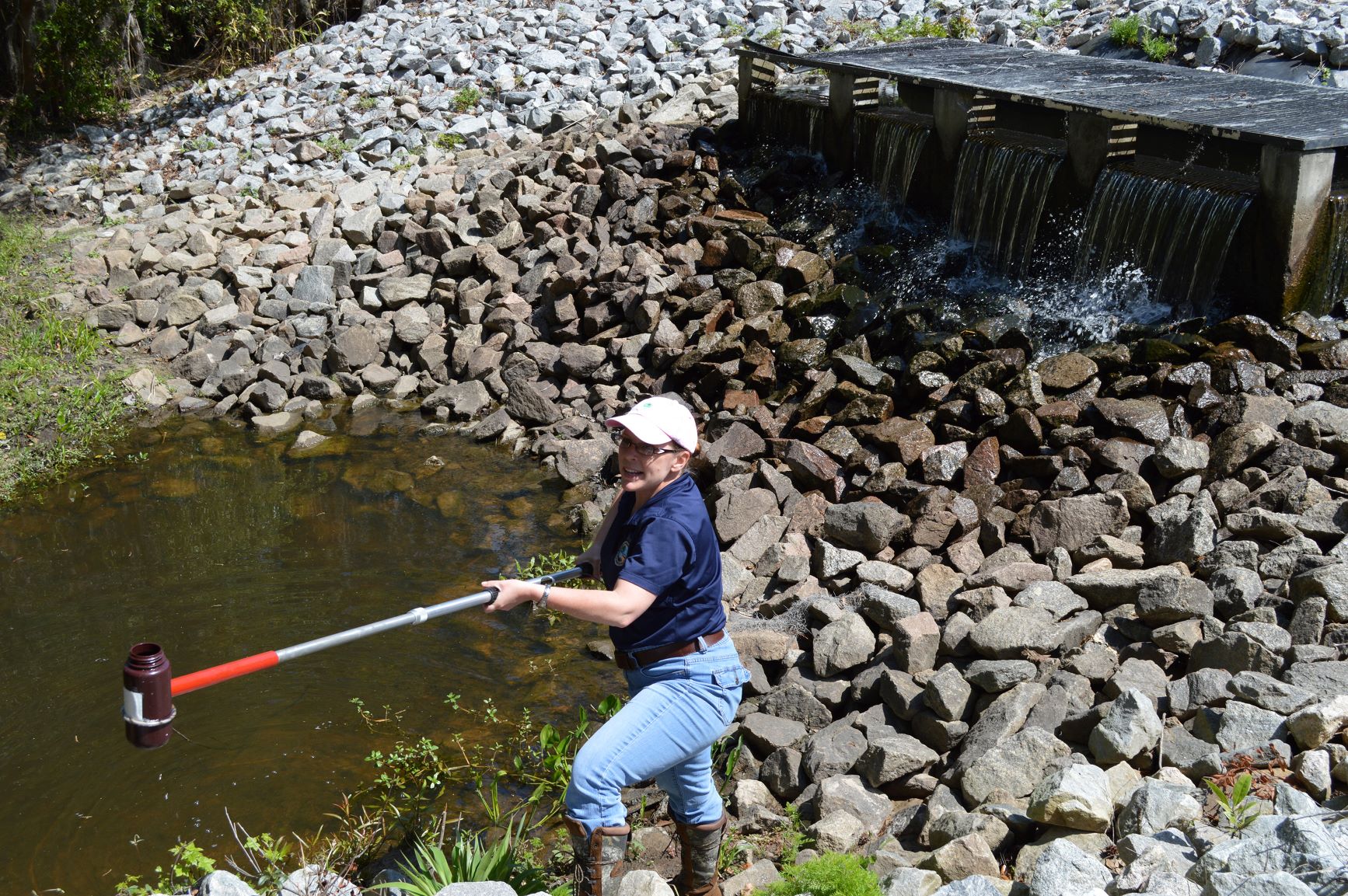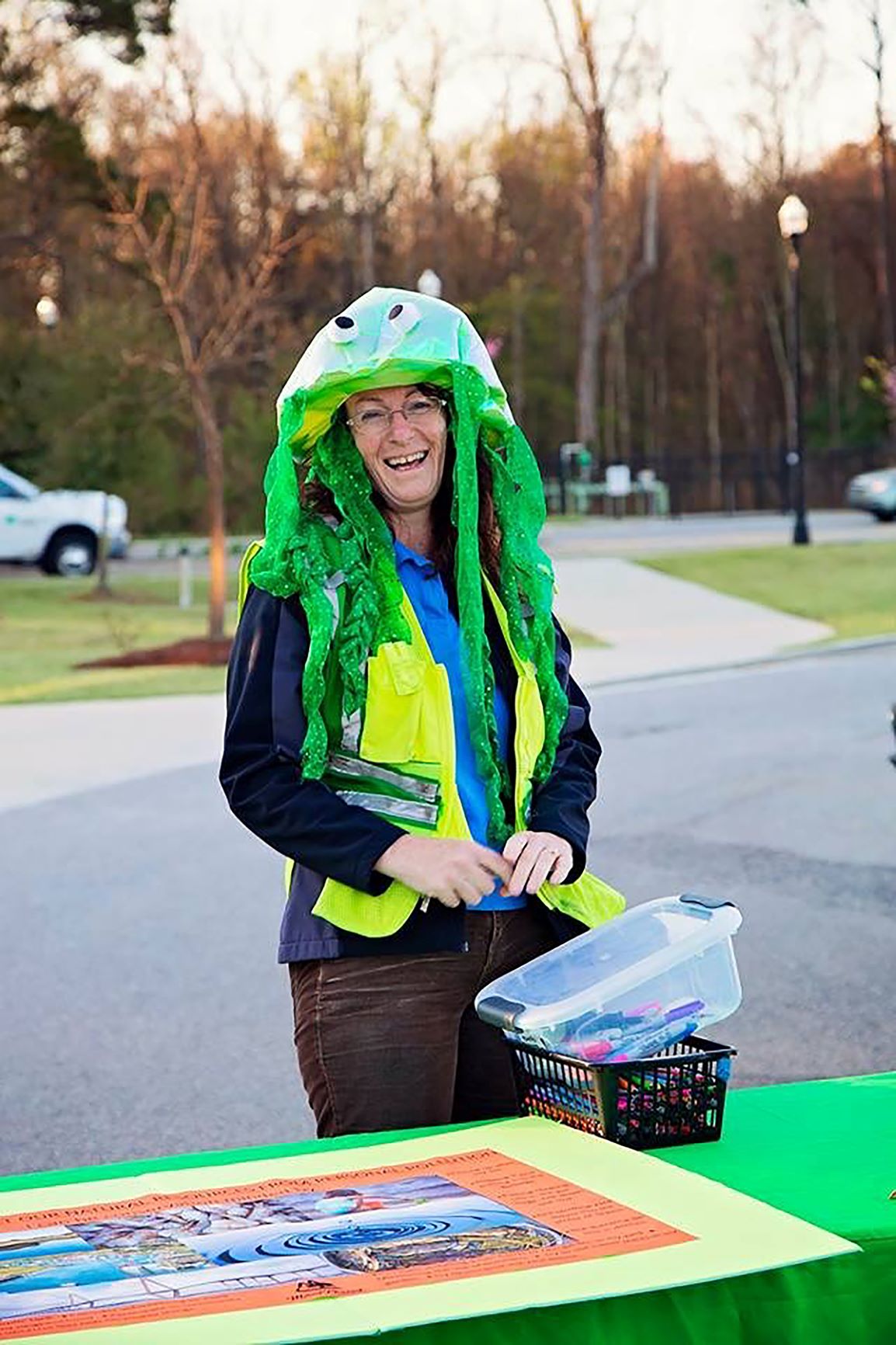Everyday work for a stormwater manager in South Carolina can range from testing the DNA of E. coli bacteria found in a stream to helping a developer relocate a federally-protected species of plant.
The biologists, engineers and infrastructure managers who work for those cities and towns that manage their own stormwater systems are protecting the waterways from pollutants that run off from homes, industries and developments.

Tanya Strickland is North Augusta's stormwater manager. Photo: City of North Augusta.
Often, the water they protect is part of the town's drinking supply. Ultimately, all rivers lead to the marshes and beaches along the coast, the home of the state's seafood industry and the biggest asset in the state's tourism inventory.
Organizations responsible for stormwater management have a checklist of responsibilities based on their size. There is only one large Municipal Separate Storm Sewer System, or MS4: the SC Department of Transportation. There are a few medium-sized ones: the cities of Columbia and Greenville, and Richland County.
For the 70 small MS4s, stormwater responsibilities include educating the public about stormwater pollution and monitoring for pollutants, as well as permitting construction sites and making sure contractors follow best practices to keep pollutants out of waterways. With such a variety of responsibilities, stormwater managers always have the same goal: clean water for everyone.
Tanya Strickland has worked with North Augusta's stormwater management team since 2004. A biologist by training, she started her career with the SC Department of Health and Environmental Control working with stormwater inspections, and is now stormwater manager for the city.
Strickland and her team are responsible for several waterways, but Pretty Run Creek is their priority. The creek ultimately empties into the Savannah River, which provides the city's drinking water.
"My guys have to get to every drain in that sub-basin every year and make sure they're clean — not clogged — and nobody is polluting in them," Strickland said. "We've done aerial infrared surveys in the coldest months looking for warm water coming in. We've walked, tested the lines, looked for breaks, anything where our sewer lines may be leaking in to the creek."
Construction sites can be the biggest polluters. For those, Strickland's team is responsible for doing the inspections for both city and state stormwater permits. If a contractor has failed to follow what's known as best practices to prevent sediment, and all the pollutants that bond to it, from entering the waterways, her team can issue a report requiring corrective measures. If those are still not made, her team can issue a stop-work order.
"You don't want to do that. You don't want to put all these people out of work for a day. But that's how important it is to us," Strickland said.
Recently, when water in Pretty Run failed testing for allowable levels for E. coli contamination, Strickland's team performed a DNA test to determine the source. It was coming from deer living near the stream. While Strickland's findings don't make it easy to cut off that source of pollution, finding the source of pollutants is key to watershed management, especially along the coast.
In Bluffton, Kim Jones, division manager for watershed management, is responsible for three watersheds that include the May, Okatee, Colleton and New rivers. On the coast, these "rivers" don't flow downstream as they do elsewhere. "The May River is a finger of the ocean poking into the land," said Jones, a biologist and ecologist. "It is fed by the tides and it is the backbone of our community."

Kim Jones is Bluffton's division manager for watershed management. Photo: Town of Bluffton.
For generations, people have been hand-shucking the oysters harvested from the river. Residents have learned to swim in the May River and it is a key recreational waterway. But, by its nature, it is susceptible to lingering pollutants.
"Most rivers flush pollution downstream," Jones said. "When you have the tides feeding your river, it sloshes pollutants back and forth as the tide comes and goes. It takes 60 days for something that enters the headwaters of the river to wash out."
After a particularly heavy rain washes pollutants into the river, Jones and her staff have to test to be sure it is safe to harvest those oysters.
"Our biggest concern is fecal coliform. It's everywhere and it's persistent," she said. "We have done very robust microbial source testing."
A major source of the fecal coliform problem is individual septic systems along the river. Jones and her team take an education approach to fixing that problem, explaining what not to put into septic systems and how it affects the river, such as in 2009, when shellfish beds were closed and the town went through a yearlong watershed plan.
Up the coast, Hillary Repik is also dealing with tidal rivers, rising sea levels and aging infrastructure in the Town of Mount Pleasant. Repik always had an interest in marine biology, but studied business in college. She said that background helps her be a better asset manager for the town, where she has worked for 25 years in a variety of jobs. She is working on a certification in stormwater management and is a past president of the SC Association of Stormwater Managers and the Southeast Stormwater Association.
"I've operated a backhoe and laid pipes before and had to understand those systems, not just on paper, but how does it really work in the field," Repik said.

Hillary Repik serves as Mount Pleasant's stormwater division chief. Photo: Town of Mount Pleasant.
Mount Pleasant's recent growth has led to new developments tying into older stormwater systems. All streams lead to the town's iconic waterway, Shem Creek, which is home to restaurants, recreational businesses and shrimping and seafood operations.
One recent weekend, Repik was out in the field with the fire department to recover a fuel spill that went in a storm drain, but examples like that aren't the only stormwater emergencies. Frequent flooding from heavy rains, hurricanes and a general rise in tide levels cause damage to be repaired on a regular basis.
"We found ourselves constantly requesting emergency money," she said.
To meet the stormwater system's growing demands, the town created its own "rainy day" fund. Whenever stormwater fee collections exceeded their needs in any given year, the extra went into an infrastructure maintenance fund from which the town spends about $1.5 million a year on repairs. The goal, she said, is to focus more on maintenance instead of repairs to older systems and to build better infrastructure as the town continues its rapid growth.
"Many of us were around for Hurricane Hugo and we know what can happen," she said. "Knowing that we will have damage, can we anticipate those needs and get those resources where they should be?"
